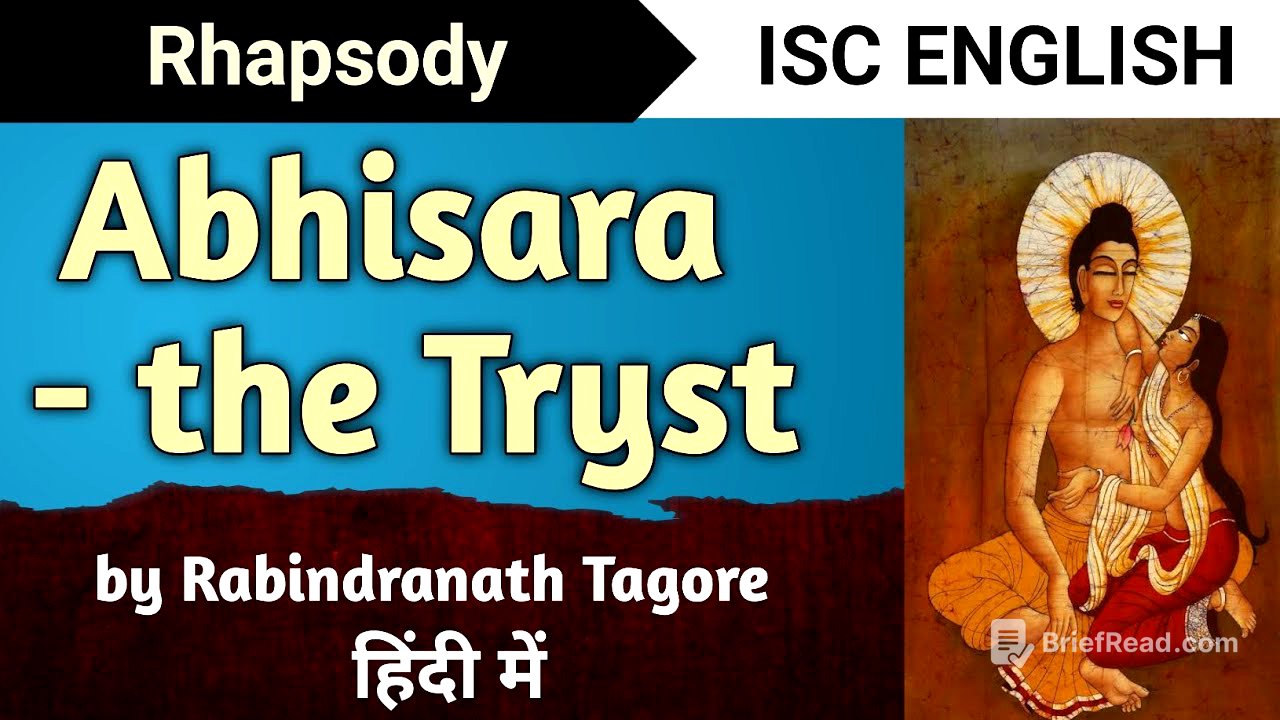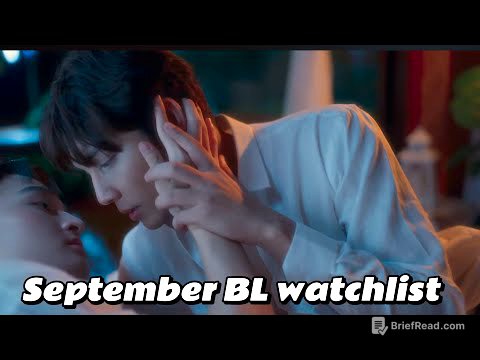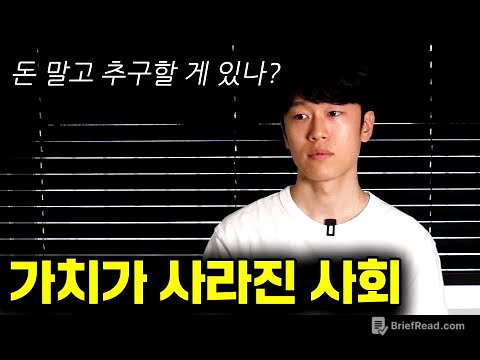TLDR;
This video provides a detailed explanation of Rabindranath Tagore's poem "Vyayam Abhisar," which translates to "Meeting of Lovers." The poem narrates the story of a Buddhist monk named Upar Gupta and a courtesan named Vasavadatta, focusing on their two significant encounters. The first meeting occurs in Mathura when Vasavadatta, adorned and proud, accidentally wakes Upar Gupta. He declines her invitation, stating he will come when the time is right. Years later, Upar Gupta finds Vasavadatta ostracized and afflicted with smallpox. He tends to her, explaining that this is the opportune moment for their meeting.
- The poem explores themes of spiritual readiness, the impermanence of beauty, and the true meaning of compassion.
- The initial encounter highlights Vasavadatta's materialistic pride and Upar Gupta's spiritual detachment.
- The second meeting reveals Upar Gupta's empathy and Vasavadatta's vulnerability, signifying a deeper, more meaningful connection.
Introduction to the Poem [0:00]
The video begins by explaining the title "Vyayam Abhisar," clarifying that "Abhisar" and "Traced" both mean "meeting," specifically a meeting between lovers. The poem revolves around two individuals: Upar Gupta, a Buddhist monk from 300 AD, and Vasavadatta, a courtesan. The narrative sets the stage for understanding whose meeting will unfold and when.
The First Encounter [0:42]
The first meeting takes place on a dark, rainy night in Mathura. Upar Gupta is sleeping on the roadside when Vasavadatta, passing by, accidentally bumps into him. She apologizes and invites him to her house, but he refuses, stating that he will visit her when the time is right. This encounter introduces Vasavadatta as a beautiful, young woman and Upar Gupta as a detached, spiritually focused monk.
Setting the Scene: Mathura at Night [2:45]
The scene is set outside Mathura on a dark, rainy August night. The doors are closed, and the stars are hidden by clouds. The sound of anklets breaks the silence as Vasavadatta approaches. Her anklets jingle as she walks, and she accidentally bumps into Upar Gupta, who is lying on the ground.
Vasavadatta's Pride and Upar Gupta's Response [4:48]
Vasavadatta startles Upar Gupta, who looks at her with forgiving eyes, showing no anger. She is described as a dancing girl, covered in a light blue mantle, proud of her youth and beauty. She invites him to her house, but Upar Gupta declines, stating that he will come to her when the time is ripe. He implies that she is currently too materialistic and caught up in her pride.
The Approaching Storm and Passage of Time [9:44]
The weather turns ominous with lightning, foreshadowing significant events. The narrator emphasizes that this bad weather hints that something very big is going to happen ahead. Many months pass, and the narrative shifts to the month of April.
The Second Meeting: A Changed Landscape [11:32]
It is now April, and the scene is set in a spring evening. The trees are full of flowers, and the sound of a flute fills the air. The city is empty because people have gone to the forest to celebrate the Festival of Flowers. The moon is full, and its light bathes the quiet city.
Upar Gupta's Journey and Discovery [15:20]
Upar Gupta walks towards the city gates, passing through the empty streets. He hears the cuckoo bird singing a melody of love and longing. Reaching the city walls, he finds Vasavadatta lying near his feet, afflicted with smallpox. Her body is covered in sores, and she has been cast out of the city to prevent the disease from spreading.
Compassion and the Right Time [18:59]
Upar Gupta places Vasavadatta's head on his knees, gives her water to drink, and applies ointment to her sores. Vasavadatta asks who he is, and Upar Gupta replies that the right time to meet her has come. He explains that when they first met, she had beauty, wealth, and people around her, but now she has nothing. This moment, in her vulnerability and suffering, is the appropriate time for their meeting.









